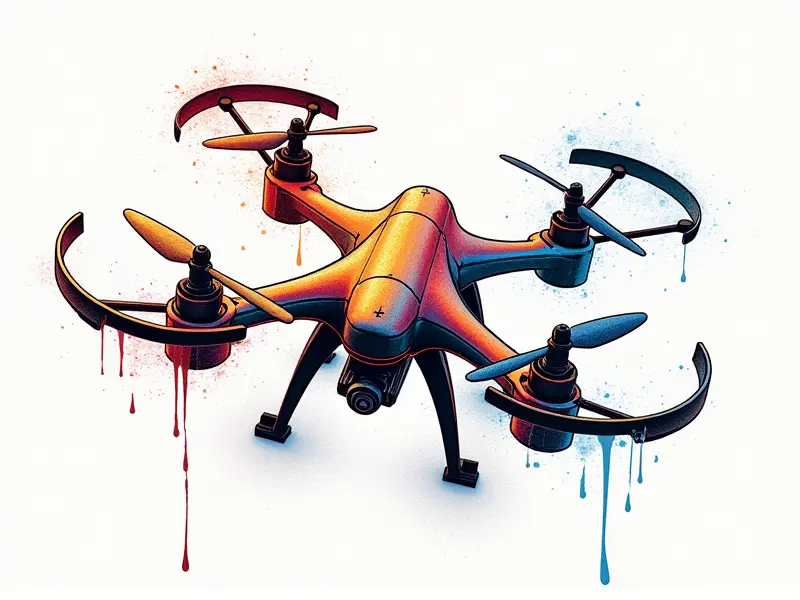How do drones avoid obstacles?

Best Practices for Drone Flight Safety
Ensuring the safety of drone flights is paramount, especially when navigating through complex environments. Best practices include pre-flight checks to ensure all systems are functioning correctly and understanding local regulations regarding airspace usage. Pilots should also maintain visual line-of-sight with their drones at all times.
Mastering Drone Obstacle Detection Techniques
To effectively avoid obstacles, drone pilots must master various detection techniques. These include the use of ultrasonic sensors for short-range detection and infrared cameras for identifying objects in low-light conditions. Pilots should also be familiar with software algorithms that process sensor data to provide real-time feedback.
Advanced Techniques for Drone Collision Avoidance
Advanced collision avoidance techniques involve integrating multiple types of sensors, such as LiDAR (Light Detection and Ranging) systems, which offer high-resolution 3D mapping capabilities. These technologies enable drones to navigate through dense environments with greater precision.
Understanding Sensor Technology in Drone Navigation
Sensor technology plays a crucial role in drone navigation by providing critical data about the surrounding environment. Common sensors include GPS for positioning, accelerometers and gyroscopes for orientation, and barometric pressure sensors for altitude control. Each sensor contributes unique information that enhances overall flight safety.
Essential Gear for Drone Obstacle Avoidance
To enhance obstacle avoidance capabilities, pilots should invest in high-quality gear such as thermal imaging cameras, which can detect heat signatures of objects even in complete darkness. Additionally, drones equipped with multiple camera angles and wide-angle lenses offer broader field-of-view coverage.
How AI Helps Drones Detect and Dodge Objects
The integration of artificial intelligence (AI) into drone systems significantly improves obstacle detection and avoidance capabilities. Machine learning algorithms can analyze vast amounts of sensor data to predict potential hazards, allowing drones to autonomously adjust their flight paths accordingly.
The Future of Autonomous Drone Flight
Advancements in AI and sensor technology are paving the way for fully autonomous drone flights. In the future, drones will be capable of navigating complex urban environments without human intervention, revolutionizing industries such as delivery services and infrastructure inspection.
Smart Ways Your Drone Can Navigate Safely
Safeguarding your drone during flight involves adopting smart navigation strategies. This includes setting up virtual geofences to restrict drones from entering restricted areas and implementing fail-safe mechanisms that automatically land the drone if communication is lost with the ground station.
Radar Systems for Drone Obstacle Avoidance
Modern radar systems offer unparalleled accuracy in detecting obstacles, making them invaluable tools for drone navigation. These systems can detect objects at long ranges and provide detailed information about their size, shape, and distance, enabling drones to avoid collisions proactively.
Enhancing Drone Performance with Obstacle Detection
Incorporating advanced obstacle detection features into your drone's software enhances its overall performance. Features such as real-time 3D mapping and predictive path planning allow drones to navigate through challenging terrains more efficiently, reducing the risk of accidents.
Quick Guide to Drone Collision Prevention
- Conduct thorough pre-flight checks: Ensure all sensors are functioning correctly before takeoff.
- Use multiple sensor types: Combine ultrasonic, infrared, and LiDAR systems for comprehensive coverage.
- Leverage AI technologies: Implement machine learning algorithms to predict potential hazards.
- Invest in high-quality gear: Equip your drone with thermal imaging cameras and wide-angle lenses.
Conclusion
The ability of drones to avoid obstacles is a testament to the rapid advancements in technology. By mastering best practices, utilizing advanced sensor technologies, and integrating AI capabilities, pilots can ensure safer and more efficient flights. As we look towards the future, the potential for fully autonomous drone navigation promises even greater possibilities.

